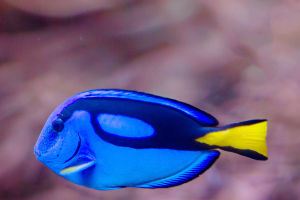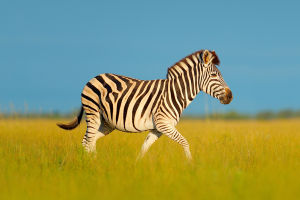Hummingbirds are a fascinating family of birds native to the Americas. They are known for their small size, with most species measuring between 7.5 and 13 cm in length, and for their incredible flying abilities, including the ability to hover, invert, and fly rapidly.
With 300-340 species in total, hummingbirds are the smallest bird family in Aves. They are also important pollinators, with their beak and tongue organs well-adapted for sucking nectar and pollen from flowers.
Hummingbirds generally have blue or green plumage, with lighter underparts. Male birds often have a crest or slender tail feathers, and are usually blue-green in color, though some species have purple, red or yellow feathers.
The female birds have darker body plumage. Hummingbirds are restricted to the Americas, with most species occurring in tropical and subtropical Central and South America, but some species also breed in temperate climates.
Hummingbirds are diurnal and are extremely sensitive to brightly colored flowers. They will fly around the flowers, using their beaks and tongues to suck nectar and pollen. Hummingbirds are also highly aggressive birds, known to defend their food sources and territories fiercely.
In addition to nectar and pollen, hummingbirds' diet includes small insects and invertebrates such as spiders. Their stomachs have powerful muscles and glands that secrete digestive juices to digest this food.
The ability of hummingbirds to fly is one of the things that makes them special. Hummingbird wings can beat 50-80 times per second, enabling them to hover, invert, and fly rapidly. Their hearts beat very fast, averaging 600-1200 beats per minute.
Hummingbirds choose a suitable place to nest during the breeding season, usually on a tree branch or in a bush. Hummingbird nests are spherical in shape and constructed of materials such as leaves, bark, and spider webs.
The female will lay 1-3 eggs and the incubation period will be 2-3 weeks. It takes about 3 weeks for the chicks to leave the nest independently, and they need a period of parental care after leaving the nest.
Hummingbirds in the tropics do not usually migrate, but some species change altitude in response to changes in temperature and seasons. Hummingbirds in North America can travel more than 5,000 kilometers round-trip during migration.
Male hummingbirds arrive first at breeding and wintering grounds, followed by females and young. Some hummingbirds have to gain 50 percent of their weight before migrating to compensate for the energy expended in flight.
The hummingbird is an important symbol in many American cultures, representing speed, alertness, and agility. In Native American traditions, hummingbirds have a strong connection to the natural and spiritual world. Hummingbirds are also a protected species, with many species facing threats due to habitat destruction, climate change, and illegal hunting.
As a result, many conservation organizations and agencies are working to protect and restore hummingbird habitats to ensure the continued existence of these beautiful and precious birds into the future.
These efforts include protecting natural areas, creating wildlife corridors, and educating people about the importance of conserving hummingbirds and their habitats. By working together to protect hummingbirds, we can help ensure that these amazing birds continue to thrive and bring joy to people around the world for generations to come.


